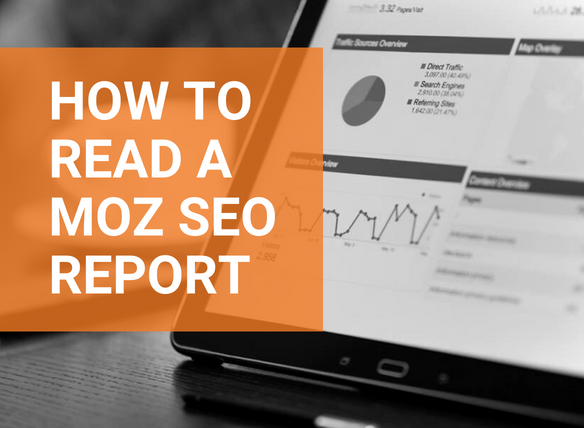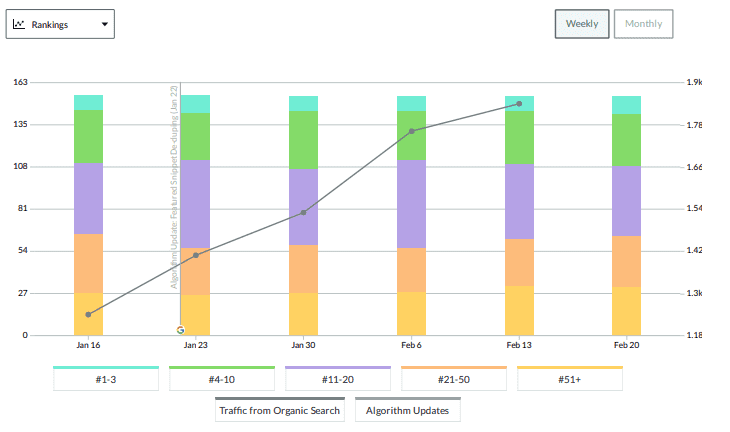

MOZ is an independent software tool that we use to help keep our SEO (Search Engine Optimisation) team more accountable, and help you identify areas to improve your website.
This is how to make sense of what all the numbers mean…
Date Range – this is when the keyword tracking was started up to the date of the report.

Search Visibility – this is just like market share, out of all of the times the user Googled your keywords, your website was shown 3.03% of the time. The number underneath shows the increase over last month, so in this example your market share has increased 23.52% – this is good. If this this had a red arrow, this would indicate your market share has decreased which would be bad.

Rankings – this shows your many positions you have, for example in position #1, #2 and #3 (aka the top 3 spots), you have 12 rankings and this is up 3 over last month. In positions #4 to position #10, you have 33 rankings and this is down 1 on last month.

Movement – this is an overall summary of how many improvements you had and how many you lost. In this example 45 rankings have increased and 64 rankings have decreased. While this looks bad, its important to consider what keywords have increased and what has decreased. Its all about priorities and we discuss that next (scroll down).

Graph – this isn’t particularly useful, it just shows a summary of your rankings over time. Skip this.

Keyword Tracking – this is the most important part of the report.

Keyword – this lists all the keywords that we are tracking. We can always add more. What is important to look for here is if the keywords match what you want to rank for and remove those that you don’t.

Location – also very important to consider in relation to the keyword, this will either say “National” which means Australia wide or a city/state specifically like Sydney. Thus you might get a keyword like “cheap lawnmower” searched from a Sydney location or a National Location or a Brisbane location. Where your website ranks in the search engine results page (called a SERP) will be different for different locations so its important to consider the location of your users when reviewing keywords.

Monthly Volume – this gives an indication as to how many customers/prospects are Googling each month. In this example, the first keyword has approximately 200 to 500 people a month searching for it. Ideally you want to focus on getting the highest ranks for the highest volume keywords first as this will be the most difficult to optimise your website for.

Rank – this shows the current ranking position and how it has changed over time. In this example, the first keyword is now position #9 (anything <10 is generally first page and #1 is the best you can get), and this has moved up 36 spots so from position #45 to position #9 in one month is an excellent achievement. If you find a keyword with a red arrow you need to ask yourself if that keyword is important and if so go about optimising your website for that term. If its not important, then you should remove from the keyword tracking.

URL – this shows you the page on your website that Google sees as most relevant for the keyword and thus what page the user will land on. This is often not the home page and therefore if you are finding you are getting good rankings (positions <10, aka page 1), but are not converting on that keyword, then its time to review that page and see what you can do to increase your conversions.

Remember the aim of the game is to get better and better rankings over time for as many keywords as possible but to only focus on keywords that deliver traffic that converts into leads and sales, not just increase the overall traffic volume.
If you have any questions about MOZ or would like to setup MOZ to track your keywords or SEO agency, then please contact us.